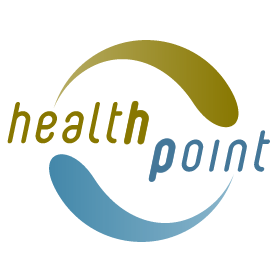Hutt, Wellington > Private Hospitals & Specialists >
Dr Stu Thomson & Dr Ting Wang - Musculoskeletal Pain Specialists
Private Service, Musculoskeletal, Pain Management
Today
8:30 AM to 5:00 PM.
Description
Dr Stu Thomson and Dr Ting Wang provide medical pain and sports services to Wellington and surrounding areas. They are both highly qualified and experienced musculoskeletal specialists.
Services include:
- sports and exercise-related problems
- spinal pain
- chronic pain conditions
- ultrasound-guided injections
What is Musculoskeletal Medicine?
Musculoskeletal medicine involves the diagnosis and treatment of disorders of the musculoskeletal system (bones, muscles, cartilage, ligaments, tendons and other connective tissue). Musculoskeletal disorders may occur as the result of injury or of a gradual onset condition such as osteoarthritis and will typically cause chronic (long term) or acute disability and pain.
Management of musculoskeletal disorders includes a wide range of treatments such as: patient education, pain management strategies, manipulative techniques, exercise and rehabilitation programmes, acupuncture, specialised injection techniques and medication.
Consultants
-

Dr Stu Thomson
Musculoskeletal Pain Specialist
-

Dr Ting Wang
Musculoskeletal Pain Specialist
Ages
Youth / Rangatahi, Adult / Pakeke, Older adult / Kaumātua
How do I access this service?
Referral
Contact us
We welcome enquiries directly from patients.
Referral Expectations
Please bring in your x-rays, CT scans and MRI results which are relevant to the problem.
What to expect
In order to gain a thorough objective assessment of the problem, you are likely to be examined while walking and standing as well as lying on the plinth. This differs from the usual medical consultation for non-musculoskeletal problems.
Fees and Charges Categorisation
Fees apply
Fees and Charges Description
Southern Cross Affiliated Peroviders and NIB First Choice members
Hours
8:30 AM to 5:00 PM.
| Mon – Fri | 8:30 AM – 5:00 PM |
|---|
Office hours as above.
Languages Spoken
English, Mandarin Chinese
Procedures / Treatments
Management of pain problems may require manual therapies, pharmacotherapy, referral to allied health professionals including physiotherapists, osteopaths, chiropractors, psychologists, psychiatrists, occupational therapists and physicians, ACC programmes etc. Acute pain problems should be aggressively treated so as to prevent chronicity which may have profound effects on the patient and family.
Management of pain problems may require manual therapies, pharmacotherapy, referral to allied health professionals including physiotherapists, osteopaths, chiropractors, psychologists, psychiatrists, occupational therapists and physicians, ACC programmes etc. Acute pain problems should be aggressively treated so as to prevent chronicity which may have profound effects on the patient and family.
Management of pain problems may require manual therapies, pharmacotherapy, referral to allied health professionals including physiotherapists, osteopaths, chiropractors, psychologists, psychiatrists, occupational therapists and physicians, ACC programmes etc.
Acute pain problems should be aggressively treated so as to prevent chronicity which may have profound effects on the patient and family.
Any joint in the upper or lower limbs may be a source of pain, and intra-articular injection may be the best treatment option. Often these can be done as an office procedure but the more complex ones may require x-ray guidance such as the hip joint, sacrococcygeal joint etc. The advantage is that joint entry can be confirmed with contrast, thus maximising the treatment effect.
Any joint in the upper or lower limbs may be a source of pain, and intra-articular injection may be the best treatment option. Often these can be done as an office procedure but the more complex ones may require x-ray guidance such as the hip joint, sacrococcygeal joint etc. The advantage is that joint entry can be confirmed with contrast, thus maximising the treatment effect.
Any joint in the upper or lower limbs may be a source of pain, and intra-articular injection may be the best treatment option. Often these can be done as an office procedure but the more complex ones may require x-ray guidance such as the hip joint, sacrococcygeal joint etc. The advantage is that joint entry can be confirmed with contrast, thus maximising the treatment effect.
Peripheral nerve blocks are interventions which involve injections of local anaesthetic and/or steroids around peripheral nerves in order to influence pain phenomena. These can include injections under the flexor retinaculum at the wrist for carpal tunnel syndrome, injections around the suprascapular nerve for varieties of shoulder and periscapular pain, occipital nerve blocks for occipitalgia and headaches, ilio-inguinal nerve blocks, intercostal nerve blocks, lateral femoral cutaneous nerve blocks, genitofemoral nerve blocks, and diagnostic cervical and lumbar medial branch blocks for the diagnosis of chronic pain in those regions.
Peripheral nerve blocks are interventions which involve injections of local anaesthetic and/or steroids around peripheral nerves in order to influence pain phenomena. These can include injections under the flexor retinaculum at the wrist for carpal tunnel syndrome, injections around the suprascapular nerve for varieties of shoulder and periscapular pain, occipital nerve blocks for occipitalgia and headaches, ilio-inguinal nerve blocks, intercostal nerve blocks, lateral femoral cutaneous nerve blocks, genitofemoral nerve blocks, and diagnostic cervical and lumbar medial branch blocks for the diagnosis of chronic pain in those regions.
Peripheral nerve blocks are interventions which involve injections of local anaesthetic and/or steroids around peripheral nerves in order to influence pain phenomena. These can include injections under the flexor retinaculum at the wrist for carpal tunnel syndrome, injections around the suprascapular nerve for varieties of shoulder and periscapular pain, occipital nerve blocks for occipitalgia and headaches, ilio-inguinal nerve blocks, intercostal nerve blocks, lateral femoral cutaneous nerve blocks, genitofemoral nerve blocks, and diagnostic cervical and lumbar medial branch blocks for the diagnosis of chronic pain in those regions.
Most muscles in the body can produce ongoing pain and disability. Sometimes this is associated with the presence of trigger points which sometimes resolve with injections of local anaesthetic and/or steroid injection.
Most muscles in the body can produce ongoing pain and disability. Sometimes this is associated with the presence of trigger points which sometimes resolve with injections of local anaesthetic and/or steroid injection.
Most muscles in the body can produce ongoing pain and disability. Sometimes this is associated with the presence of trigger points which sometimes resolve with injections of local anaesthetic and/or steroid injection.
Otherwise known as degenerative arthritis. OA occurs when there is a breakdown of the cartilage, leaving the bones unprotected. It is very common and usually affects people as they get older. You can get it at any age and are more likely to if you have previously injured a joint, or are overweight. The symptoms can be very mild with just occasional pain with activity. Worsening symptoms include pain with activity and stiffness with rest. Joints can become swollen and restricted in movement. Joints can change shape as the bone changes in response to loss of protection. You otherwise feel well. The diagnosis is made on the basis of the history, examination findings and sometimes x-rays. The severity of joint damage seen on x-ray does not always correlate with the degree of pain you experience. Treatment includes guided exercises, weight reduction if needed, pain relief and sometimes surgery. For more information see www.arthritis.org.nz
Otherwise known as degenerative arthritis. OA occurs when there is a breakdown of the cartilage, leaving the bones unprotected. It is very common and usually affects people as they get older. You can get it at any age and are more likely to if you have previously injured a joint, or are overweight. The symptoms can be very mild with just occasional pain with activity. Worsening symptoms include pain with activity and stiffness with rest. Joints can become swollen and restricted in movement. Joints can change shape as the bone changes in response to loss of protection. You otherwise feel well. The diagnosis is made on the basis of the history, examination findings and sometimes x-rays. The severity of joint damage seen on x-ray does not always correlate with the degree of pain you experience. Treatment includes guided exercises, weight reduction if needed, pain relief and sometimes surgery. For more information see www.arthritis.org.nz
Otherwise known as degenerative arthritis. OA occurs when there is a breakdown of the cartilage, leaving the bones unprotected. It is very common and usually affects people as they get older. You can get it at any age and are more likely to if you have previously injured a joint, or are overweight.
The symptoms can be very mild with just occasional pain with activity. Worsening symptoms include pain with activity and stiffness with rest. Joints can become swollen and restricted in movement. Joints can change shape as the bone changes in response to loss of protection. You otherwise feel well.
The diagnosis is made on the basis of the history, examination findings and sometimes x-rays. The severity of joint damage seen on x-ray does not always correlate with the degree of pain you experience.
Treatment includes guided exercises, weight reduction if needed, pain relief and sometimes surgery. For more information see www.arthritis.org.nz
This is a syndrome of widespread aches, pains and fatigue. There may be morning stiffness and sleep problems. The diagnosis is made on the history of the pain and accompanying symptoms as well as the presence of tender points at specific sites on the body. There are a number of different theories and reasons for this condition. There will often be blood tests and maybe x-rays to exclude other diagnoses. Treatment involves pain killers, exercises, rest and sometimes antidepressant medication. For more information see www.arthritis.org.nz
This is a syndrome of widespread aches, pains and fatigue. There may be morning stiffness and sleep problems. The diagnosis is made on the history of the pain and accompanying symptoms as well as the presence of tender points at specific sites on the body. There are a number of different theories and reasons for this condition. There will often be blood tests and maybe x-rays to exclude other diagnoses. Treatment involves pain killers, exercises, rest and sometimes antidepressant medication. For more information see www.arthritis.org.nz
This is a syndrome of widespread aches, pains and fatigue. There may be morning stiffness and sleep problems. The diagnosis is made on the history of the pain and accompanying symptoms as well as the presence of tender points at specific sites on the body. There are a number of different theories and reasons for this condition. There will often be blood tests and maybe x-rays to exclude other diagnoses. Treatment involves pain killers, exercises, rest and sometimes antidepressant medication. For more information see www.arthritis.org.nz
Most headaches are not due to significant underlying problems but you may be referred if your GP is worried about the nature of your headaches or you are having difficulty controlling them with standard treatment. Migraine headaches are repeated or recurrent headaches, often accompanied by other symptoms. They can be triggered by certain factors/events/foods. In some people, a visual disturbance called an aura happens before the headache starts. Other symptoms that may precede or accompany the headache include loss of appetite, nausea, vomiting, increased sweating, irritability, fatigue and intolerance of light or noise. The headache may last several hours to days. There is no cure for migraine headaches but treatment is aimed at: preventing migraines from occurring, stopping the migraine once early symptoms develop, and treating the symptoms of migraine (e.g. pain, nausea).
Most headaches are not due to significant underlying problems but you may be referred if your GP is worried about the nature of your headaches or you are having difficulty controlling them with standard treatment. Migraine headaches are repeated or recurrent headaches, often accompanied by other symptoms. They can be triggered by certain factors/events/foods. In some people, a visual disturbance called an aura happens before the headache starts. Other symptoms that may precede or accompany the headache include loss of appetite, nausea, vomiting, increased sweating, irritability, fatigue and intolerance of light or noise. The headache may last several hours to days. There is no cure for migraine headaches but treatment is aimed at: preventing migraines from occurring, stopping the migraine once early symptoms develop, and treating the symptoms of migraine (e.g. pain, nausea).
Most headaches are not due to significant underlying problems but you may be referred if your GP is worried about the nature of your headaches or you are having difficulty controlling them with standard treatment.
Migraine headaches are repeated or recurrent headaches, often accompanied by other symptoms. They can be triggered by certain factors/events/foods. In some people, a visual disturbance called an aura happens before the headache starts.
Other symptoms that may precede or accompany the headache include loss of appetite, nausea, vomiting, increased sweating, irritability, fatigue and intolerance of light or noise. The headache may last several hours to days.
There is no cure for migraine headaches but treatment is aimed at: preventing migraines from occurring, stopping the migraine once early symptoms develop, and treating the symptoms of migraine (e.g. pain, nausea).
Disability Assistance
Wheelchair access
Additional Details
Face to face / Kanohi ki te Kanohi, Phone, Online / virtual / app, Speak with women / wahine, Speak with men / tane
Travel Directions
The Motion Health Lambton Quay Clinic/ Wellington Pain Specialist clinic is on level 2, 354 Lambton Quay in central Wellington. It is directly opposite the Old Bank Arcade. The entrance to the clinic is between the Unichem Plimmer Steps Pharmacy and Mischief Shoes. The building is open from 8:00 am to 5:00 pm. There is a lift that can take you up to level 2. The contact phone number is 04-8311006. If unanswered, please leave a message with your name and preferred phone number, and my office will contact you back.
Public Transport
Many buses pass through Lambton Quay, including No 1, 2, 3, 4, 7, 12e, 14, 17, 20, 23, 24, 27, 52, 58, 60e, 81, 83, 84, etc. Wellington Railway Station at Bunny Street, Pipitea is about one kilometre away. There are many buses connecting the Railway Station to our clinic.
Parking
Off-street parking for up to two hours can be found on streets nearby. Busy hours may affect the availability. Wilson parking buildings at Gilmer Terrace (04-473 2293), 80 Boulcott Street (04-473 2293), Waring Taylor Street (0800 727 546) or 1 Jervois Quay (04-499 4444) are within 10 minutes walking distance.
Pharmacy
Find nearby pharmacies here
Contact Details
8:30 AM to 5:00 PM.
-
Phone
(04) 8311 006
Email
Level 2, 354 Lambton Quay
Wellington Central
Wellington
Wellington 6145
Street Address
Level 2, 354 Lambton Quay
Wellington Central
Wellington
Wellington 6145
Postal Address
Level 2, 354 Lambton Quay,
Wellington Central,
Wellington 6145
Was this page helpful?
This page was last updated at 10:36PM on April 17, 2024. This information is reviewed and edited by Dr Stu Thomson & Dr Ting Wang - Musculoskeletal Pain Specialists.
